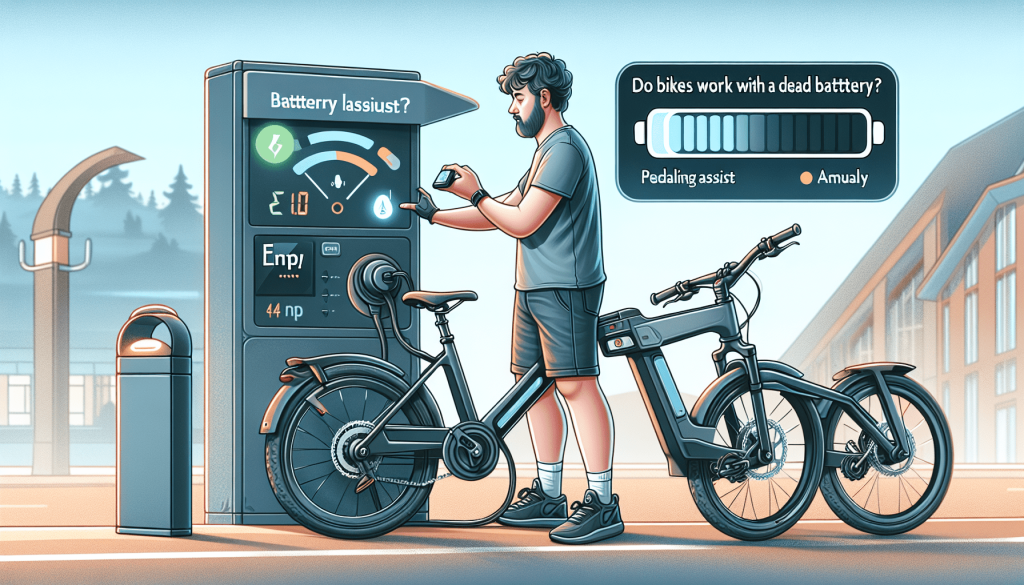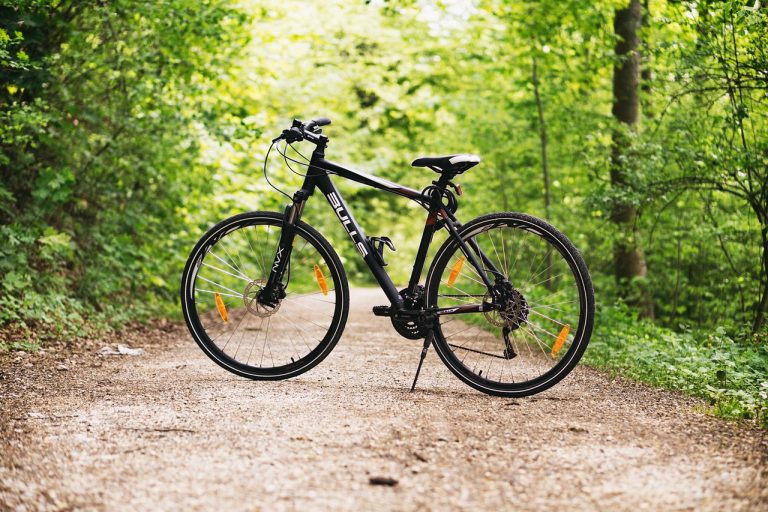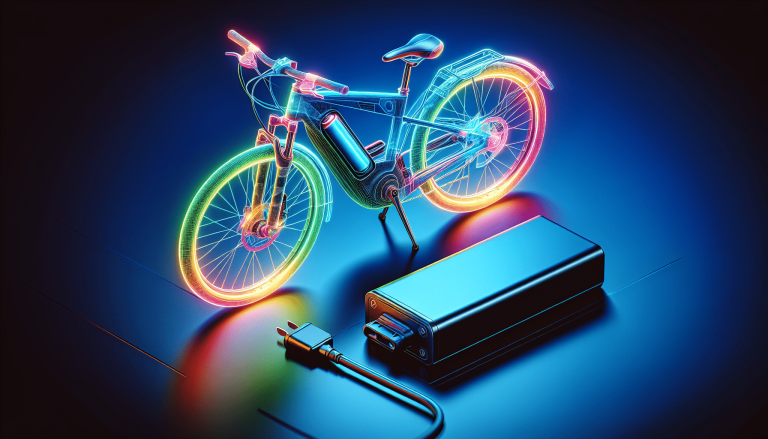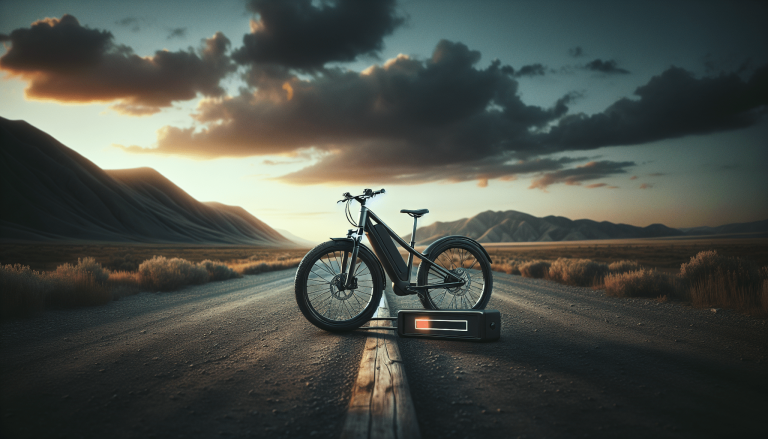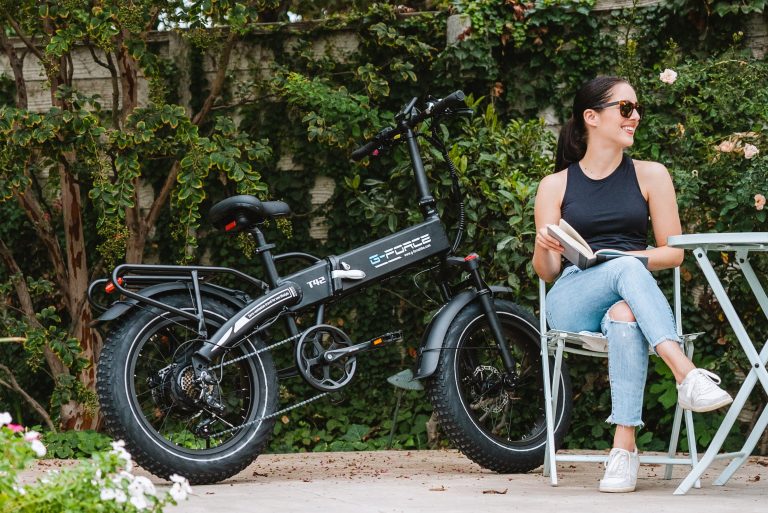Do Ebikes Work With A Dead Battery?
Have you ever wondered if your electric bike can still function when its battery is dead? The answer may surprise you. In this article, we’ll explore the possibility of riding an e-bike when the battery runs out of juice, and uncover some interesting facts about these innovative modes of transportation. So, whether you’re an e-bike enthusiast or simply curious about how they operate, keep reading to find out if ebikes work with a dead battery.

Ebikes with Dead Battery
Overview of Ebikes
Ebikes, or electric bicycles, have gained immense popularity in recent years due to their numerous advantages and convenience. These innovative modes of transportation combine the freedom and health benefits of cycling with the added power and assistance of an electric motor. They offer a thrilling and efficient way to commute, exercise, and explore the outdoors. However, like any other battery-powered device, ebikes rely on the functionality of their batteries to operate at their full potential.
Battery Function in Ebikes
The battery is a crucial component of an ebike as it provides the necessary power to drive the electric motor. It serves as the main source of energy, offering additional assistance to riders in two primary modes: pedal assist and throttle mode.
Impact of Dead Battery on Ebike Performance
A dead battery can significantly affect the performance of an ebike. Without a functional battery, the bike loses its electric assist capabilities and becomes a regular, unpowered bicycle. The dead battery renders the electric motor inoperable, limiting riders to rely solely on their physical power to propel themselves forward. However, it’s essential to explore the specific consequences of a dead battery on the different modes of an ebike to gain a comprehensive understanding.
Pedal Assist Mode
Operation of Pedal Assist Mode
In pedal assist mode, the motor provides assistance to the rider’s pedaling efforts. Sensors in the ebike detect the rider’s motion and apply additional motor power accordingly. This feature creates a seamless and natural riding experience, making it easier to conquer inclines and travel longer distances without excessive exertion.
Dependency on Battery Power
To operate in pedal assist mode, the ebike relies heavily on battery power. The electric motor requires consistent energy supply to function, and a dead battery will disable this mode entirely. Consequently, the rider will need to rely solely on their pedaling strength, as the ebike will no longer provide any electric assistance.
Effects of Dead Battery on Pedal Assist Mode
When faced with a dead battery, the pedal assist mode essentially becomes obsolete. Riders will experience a significant reduction in their overall speed and the ease with which they can tackle inclines or challenging terrains. While riding an ebike with a dead battery is still possible, it essentially transforms into a conventional bike, solely reliant on the rider’s physical capabilities.
Throttle Mode
Functioning of Throttle Mode
Throttle mode allows riders to activate the electric motor without pedaling. By simply twisting a throttle or pressing a button, the motor engages and propels the ebike forward. This mode is particularly useful in situations where pedaling is not preferred or feasible, such as during startup, when tired, or when needing an extra burst of speed.
Battery Power and Throttle Mode
Similar to pedal assist mode, throttle mode relies heavily on the battery power to initiate and control the electric motor. A dead battery will render the throttle mode useless, as the lack of power will prevent the motor from functioning. At this point, the rider will have to manually pedal the ebike to continue moving forward.
Consequences of Dead Battery on Throttle Mode
When the battery of an ebike is dead, riders lose the convenience of throttle mode. They will no longer be able to rely solely on the electric motor to propel themselves and will need to rely solely on their pedaling efforts. This shift can be inconvenient, especially for riders who specifically choose an ebike to reduce physical exertion.
Benefits of Pedaling
Role of Pedaling in Ebikes
While the electric motor provides substantial assistance, pedaling remains an integral part of the ebike riding experience. Pedaling enables riders to maintain control, stay engaged, and contribute to their own fitness levels. Additionally, pedaling helps to extend the range of the ebike by conserving battery power.
Using Pedals with a Dead Battery
When faced with a dead battery, pedaling becomes the primary method of propulsion for an ebike. Riders must rely solely on their physical strength to keep moving forward. However, the absence of electric assistance does not diminish the benefits of pedaling. A dead battery offers an opportunity to experience the true essence of cycling and engage in a traditional exercise routine.
Advantages of Pedaling with a Dead Battery
Pedaling with a dead battery provides numerous advantages. Firstly, it allows riders to maintain their fitness levels and enjoy the health benefits associated with cycling. Additionally, pedaling offers a greater sense of control and a more connected riding experience. Riders have the ability to adjust their pace and exertion levels according to their preferences, which can lead to a more enjoyable and personalized ride even without the assistance of the electric motor.

Range and Speed
Factors Affecting Range and Speed
The range and speed of an ebike are affected by various factors. These include the terrain, rider weight, wind resistance, assistance level, and most notably, the battery’s charge level. Range refers to the distance an ebike can travel on a single charge, while speed indicates how fast the ebike can reach its maximum velocity.
Battery’s Contribution to Range and Speed
The battery plays a vital role in both the range and speed of an ebike. A fully charged battery allows riders to experience the full potential of their ebike, maximizing both range and speed. With a dead battery, however, the available power is significantly reduced, resulting in a limited range and decreased top speed.
Working with Dead Battery and Its Impact on Range and Speed
When using an ebike with a dead battery, riders can expect a reduced range and slower speeds compared to a fully functional ebike. The reliance solely on physical pedaling limits the distance riders can cover efficiently, as well as their ability to reach higher speeds. It’s important to note that the extent of this impact will vary depending on the rider’s individual strength and stamina.
Assistance Level
Different Assistance Levels in Ebikes
Most modern ebikes offer multiple assistance levels. These levels allow riders to adjust the amount of electric assistance provided by the motor according to their preferences and requirements. Common assistance levels include eco, tour, sport, and turbo modes, each offering varying levels of assistance and energy consumption.
Battery Dependency in Various Assistance Levels
The different assistance levels in ebikes have varying degrees of battery dependency. Modes that provide higher levels of assistance, such as sport or turbo modes, will consume the battery power at a faster rate compared to eco or tour modes. As the battery depletes, the assistance levels that were reliant on electric power become less effective and may ultimately cease to function with a dead battery.
Effect of Dead Battery on Different Assistance Levels
With a dead battery, riders will no longer be able to access any assistance levels that relied on electric power. The ebike will default to a non-electric mode, requiring riders to rely exclusively on their physical strength. This shift in assistance levels may significantly affect the rider’s ability to conquer challenging terrains and cover long distances.

Recharging the Battery
Charging Methods for Ebike Batteries
To restore the battery’s power, ebike owners typically rely on conventional charging methods. These can include connecting the battery to a power outlet using the provided charger or utilizing a charging station specifically designed for ebike batteries. The charging time may vary depending on the battery’s capacity and the charging method being used.
Alternative Charging Options
In some cases, conventional charging methods may not be readily available. However, there are alternative options that can be considered to recharge an ebike battery. These can include using portable solar panels or utilizing a power bank capable of charging the battery. While these methods may take longer or have certain limitations, they provide alternative solutions when a traditional charging point is not accessible.
Restoring Battery Power after Being Dead
Restoring a dead ebike battery requires connecting it to a charger and allowing it to charge for a sufficient amount of time. It’s crucial to follow the manufacturer’s guidelines regarding charging times and procedures to ensure optimum performance and longevity of the battery. By allowing the battery to fully charge, riders can once again enjoy the full benefits of an electrically assisted ride.
Maintenance and Battery Life
Proper Maintenance Practices
Regular maintenance is essential to optimize the performance and lifespan of an ebike battery. This includes keeping the battery clean and dry, storing it in a cool environment, and ensuring proper charging and discharging cycles. Additionally, it is vital to inspect the battery for any signs of damage or wear, as well as following any specific manufacturer recommendations for maintenance.
Increasing Battery Life
There are several steps riders can take to extend the lifespan of an ebike battery. These include avoiding extreme temperatures, not overcharging or fully discharging the battery, and keeping it at a moderate state of charge when not in use for extended periods. Additionally, avoiding excessive strain on the battery, such as demanding steep inclines, can also help prolong its life.
Impact of Battery Maintenance on Functionality
Proper battery maintenance directly impacts the functionality of an ebike. Regular care and attention to the battery can lead to improved performance, extended range, and a longer overall lifespan. Neglecting proper maintenance practices, on the other hand, may result in diminished battery capacity, decreased performance, and, ultimately, a shorter overall battery life.
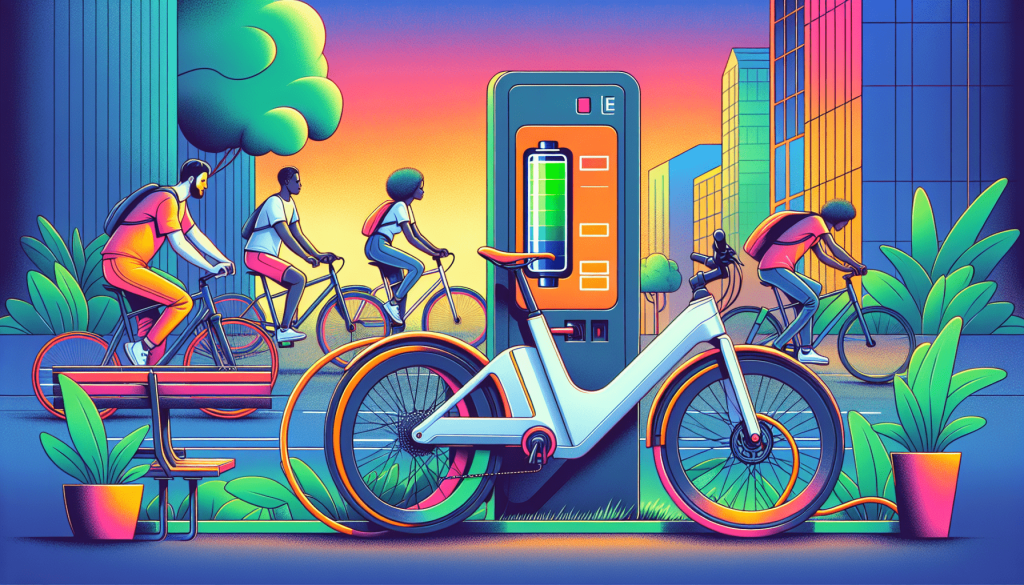
Possible Solutions
Seeking Professional Assistance
When faced with a dead battery or other battery-related issues, seeking professional assistance is often the best course of action. Certified ebike technicians have the knowledge, experience, and tools necessary to diagnose and repair battery-related problems effectively. Their expertise can help ensure that the battery and the ebike as a whole can function optimally once again.
Replacing the Battery
In some cases, a dead battery may require replacement. This can occur when the battery has reached the end of its lifespan or has experienced irreparable damage. Replacing the battery involves acquiring a new one that matches the specifications of the ebike and may require professional installation or guidance.
Repairing or Upgrading the Battery
Depending on the issue at hand, it may be possible to repair or upgrade a dead battery. Certain battery problems can be resolved through repair, such as fixing a loose connection or replacing a faulty component. Upgrading the battery can also be an option, allowing riders to replace the old battery with a higher-capacity or more advanced model, thereby improving the overall performance of the ebike.
Conclusion
Summary of Ebikes and Dead Battery
Ebikes are versatile and practical transportation options that rely on their batteries for electric assistance. When faced with a dead battery, the functionality and capabilities of the ebike are significantly affected. Both pedal assist mode and throttle mode become inoperable, limiting riders to solely physical pedal power. The range and speed of the ebike are greatly reduced, and the assistance levels reliant on the battery become ineffective.
Options and Considerations with a Dead Battery
With a dead battery, riders have the option to utilize the ebike as a regular bicycle by relying solely on pedaling. While this requires more physical effort, it allows riders to maintain fitness levels, experience a connected riding experience, and enjoy the benefits of traditional cycling. Additionally, riders can explore various options for recharging the battery or seek professional assistance, potentially leading to repair, replacement, or upgrading possibilities.
Final Thoughts on Ebikes with Dead Batteries
While a dead battery may limit the electric capabilities of an ebike, it does not render the entire bike useless. Ebikes offer a versatile and efficient means of transportation and recreation, even without electric assistance. By understanding the impact of a dead battery on various aspects of an ebike’s performance and considering the available options, riders can continue to enjoy the many benefits of ebikes, with or without a functioning battery.
